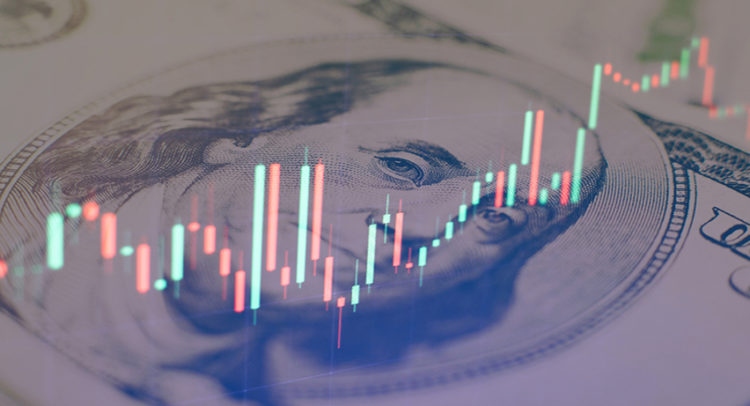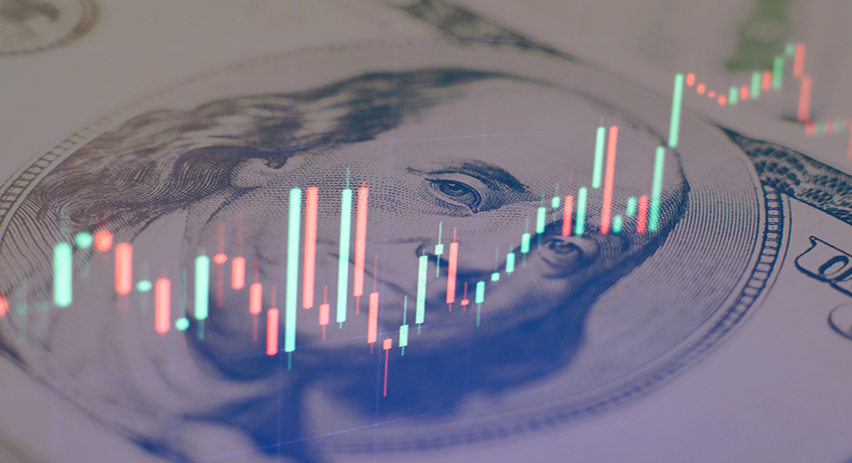With signs suggesting inflation is finally being tamed, 2023 opened with hope the Fed will take a less aggressive stance in its efforts to tame it and will start cutting interest rates. However, don’t get too hopeful that is about to actually happen this year, says Lotfi Karoui, Goldman Sachs’ chief credit strategist.
Don't Miss our Black Friday Offers:
- Unlock your investing potential with TipRanks Premium - Now At 40% OFF!
- Make smarter investments with weekly expert stock picks from the Smart Investor Newsletter
“No pivot. Certainly no cuts in 2023,” Karoui recently said, claiming the earliest the Fed will consider lowering rates could be in the first or second quarter of 2024. It’s not all bad, however; Karoui expects a ‘soft landing’ for the U.S. economy and thinks the odds of a recession hitting are generally quite low.
Whatever lies ahead, in the stock market there will always be opportunities for investors to take advantage of and Kash Rangan, Karoui’s analyst colleague at the banking giant, has been seeking out the equities he believes are primed to push ahead from here. In fact, Rangan sees a pair of stocks posting gains of at least 70% in the year ahead.
We ran these choices through the TipRanks database to get a feel for what the rest of the Street has in mind for these names. Let’s check the results.
Salesforce, Inc. (CRM)
The first stock piquing Goldman’s interest is one of the better-known names in tech and marketing. Salesforce has long been a leader in the Customer Relationship Management niche. The company offers cloud-based software solutions and apps for sales, service, and marketing, through the popular SaaS model. The company boasts that enterprise users won’t need IT experts to set up the software, and that more than 150,000 customers have used Salesforce to improve their customer relations.
Like many others in the tech sector, CRM has seen volatility in the share performance over the past year. Nevertheless, the company has still been posting steady revenues and earnings gains. In the last reported quarter, from fiscal 3Q23 (October quarter), revenue grew 14% year-over-year to reach $7.84 billion, while the non-GAAP EPS figure of $1.40 was up 10% from the prior-year figure. Salesforce guided toward revenue between $7.93 billion and $8.03 billion for fiscal Q4. We’ll see on Wednesday (March 1), if the company meets that goal.
In the meantime, ahead of the print, Goldman’s Kash Rangan has reiterated his firm’s Buy rating on this stock. Explaining his stance, he writes, “We believe CRM is at an inflection point that can vault it into the upper echelons of highly valued tech companies. Looking towards the LT opportunity, where macro and restructuring hurdles ease, we expect top-line growth to re-accelerate and OM to exceed 30%…”
“Adding to value-creating initiatives already underway (buybacks, workforce/real-estate reductions), Salesforce has a rare combination of market leadership (30% share) in the largest category within the $620bn software market (comprising 13% share and expected to have a 14-15% CAGR over next 3 years) and a largely untapped profitability lever within S&M,” the analyst added.
Alongside this picture, Rangan gives a 12-month price target of $310 per share, suggesting a gain of 90% lies in store. (To watch Rangan’s track record, click here)
If there’s any certainty on Wall Street, it’s that major tech companies will get more than their share of analyst attention. That’s certainly true here, where Salesforce has 36 recent analyst reviews on file, including 26 Buys, 9 Holds, and just 1 to Sell, adding up to a Moderate Buy consensus rating. (See CRM stock forecast)
GitLab Inc. (GTLB)
The second stock we’re looking at is GitLab, the innovative DevSecOps platform based on an open-source model that offers users increased speed and efficiency in devops work, while generating the maximum return from the end-product. GitLab allows users and collaborators to contribute together to the planning, building, and deployment of the platform – that’s the great advantage that open-source architecture brings to the table – with basic services given for free and upgrades available through a subscription model.
GitLab got its start in 2014. In the years since, the company has expanded, and now boasts some 133 consecutive monthly releases, more than 3,300 code contributors, and over 30 million registered users. The software is used by such major names as Nvidia, Siemens, T-Mobile – and even Goldman Sachs.
This past December, GitLab released its financial results for Q3 of fiscal year 2023, and showed a hefty 69% year-over-year increase at the top line, to an impressive $113 million. This was the highest quarterly revenue reported since the company went public in October of 2021. The company typically operates at a net loss, and the Q3 non-GAAP EPS loss came in at 10 cents per share; this was the lowest quarterly net loss since the stock entered the public markets. Both the top-and bottom-line results came in well ahead of expectations. GitLab will release its fiscal Q4 and full fiscal year 2023 results on this coming March 13.
While GitLab’s financial results appear strong, the company has not been unaffected by the slowdown the tech sector has seen recently. We have all heard the news of large layoffs at major names such as Google and Facebook, and Elon Musk drastically reduced the Twitter workforce after he took over that company. GitLab, too, is reducing its workforce. On February 9, the company CEO made it known that GitLab would be letting go of some 7% of its employees.
Kash Rangan, in his review of GTLB, continues to see this stock as a net-positive for investors, and writes of it: “We remind investors that GitLab has largely been able to sidestep significant pressures from the macro environment over the last two quarters. Given the broader trends we have seen emerge across software (absence of 4Q budget flush, layoffs), we would not be surprised if management re-evaluated their go-forward strategy in light of these dynamics. While this may result in a reset to the +40% revenue growth figure outlined in early December, we remain constructive on the company’s ability to drive growth via the strong value proposition of its platform…”
“Its growing partnerships with other cloud providers, namely Google Cloud, could also provide strong integrations with comparable AI functionality, which can improve its positioning across these point products,” Rangan added.
Viewing the risk/reward here as ‘positive,’ Rangan has a Buy rating on GTLB shares, and his price target, set at $75, implies a one-year upside potential of 70% from current levels. (To watch Rangan’s track record, click here)
What does the rest of the Street have to say? As it turns out, other analysts are generally on the same page. 9 Buys and 2 Holds add up to a Strong Buy consensus rating. (See GTLB stock forecast)
To find good ideas for stocks trading at attractive valuations, visit TipRanks’ Best Stocks to Buy, a tool that unites all of TipRanks’ equity insights.
Disclaimer: The opinions expressed in this article are solely those of the featured analysts. The content is intended to be used for informational purposes only. It is very important to do your own analysis before making any investment.






















